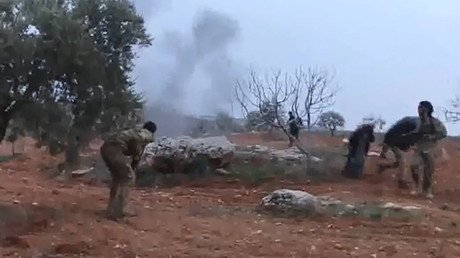‘You’ve been duped by spooks & terrorists’: Russian military reveals flaws in NYT’s report on hospital bombings
A damning report by the New York Times, which accused Russia of bombing four UN-protected hospitals in Syria, is a product of misinformation by Western intelligence services and jihadists, the Russian military said.
On Sunday, the leading US newspaper said it had irrefutable proof that Russian warplanes had bombed four sites in Syria, which it knew to be locations of civilian hospitals. The accusation stems from analysis of social media, interviews with witnesses, data provided by local plane spotters and records of communications of the Russian military deployed in Syria. The bombings, which happened on May 5 and 6, are just a faction of attacks on civilian infrastructure, for which Moscow carries responsibility, the newspaper alleged.
Responding to the accusation on Monday, the Russian military said Times report was flawed for several reasons, including failure to explain that Idlib Governorate, where the four alleged bombings took place, lives under rule of brutal jihadists. That detail affects the entire narrative, indicating its flawed sourcing.
“Gadgets, modern radio scanners, protected notebooks, internet connection are all things that the local civilian population simply cannot afford. They are more interested in daily surviving under the yoke of the terrorists,” said Defense Ministry spokesman Maj. Gen. Igor Konashenkov.
Also on rt.com Syrian Army moving to face ‘Turkish aggression’ in the north – state mediaHe was referring to the equipment used by “plane spotters”, who provided their data to Times. The newspaper said those observers “insisted on anonymity for their safety”, but the Russian military says they shouldn’t have bothered and identified them as the people behind a “combat intelligence system” based on equipment developed by a US company called Hala Systems.
The system known as Sentry is a collection of suitcase-sized sensors connected into a network plus an AI-based algorithm, which uses signals from those sensors as well as social media data to analyze and predict airstrikes in Idlib. Hala Systems says it’s a for-profit company that develops and operates the system on grants from governments of Canada, the United Kingdom, the Netherlands, Denmark the United States, and Germany.
Also on rt.com Color revolutionaries of the world, unite! Hong Kong protest leader pictured with White Helmets bossThe company deemed it necessary to explain in its FAQ that it is not a front for the CIA, but acknowledges that it deployed the system in conjunction with the notorious White Helmets, the group that operated in jihadist-held parts of Syria with strongly suspected ties to Western intelligence services.
The statement by Konashenkov said Times chose to omit those details because they clearly expose its source as potentially compromised rather than to protect anyone.
The ‘evidence’ published by NYT are not worthy even of the paper it was printed on.
He added there were inconsistencies with other parts of the report, in particular a claim that a Russian pilot received coordinates for his target openly on the air, which would have been in violation of military operating procedures.
He also questioned identification of one of the locations named by the Times as a civilian hospital, saying it was not clear how one can operate in a remote cave.
“Just a week ago we took over 80 journalists from leading Russian and international media to a cave located in that general area. They saw with their own eyes what is kept in such caves, or rather reinforced terrorist bunkers,” the Russian general said.
“There were large stockpiles of weapons and ammunition, including those Western-made, prisons, holes to cover tanks, gas masks, food and medical supplies.”
Think your friends would be interested? Share this story!














